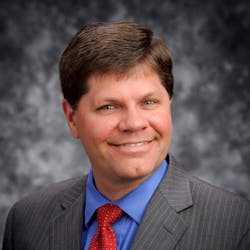Best Practices: Deployment of Hydrogen Fuel Cell Buses
I’ve received many inquiries from transit professionals and reporters about SARTA’s drive to deploy one of the largest fleets of Hydrogen Fuel Cell (HFC) buses. I’m routinely asked, “How did you do it? How did a small urban transit agency in Ohio become a leader in the HFC forum?”
There is no simple answer; however, here’s how we did it:
Clearly defined goal and options for achieving it. Our goal was to assemble a zero-emissions fleet that transitioned from diesel, to diesel/electric, to Compressed Natural Gas (CNG) vehicles. We soon realized, that CNG was not fulfilling our goal. As we learned about other alternative fuels, it became apparent that the addition of HFCs to our fleet would do just that.
Secured the funding. Like many transit agencies, we didn’t have excess funds available to develop an HFC program. That meant we had to search for and secure funding. At the time, there were several competitive grants available, we just needed to apply.
Kept the public informed. Since we are a funded by tax payer money, it was important to keep our community informed on what we were doing, why we were doing it, and how it was being funded. As a result, we received tremendous support from the public, media and our community leaders.
Built a team. To plan and launch the program we envisioned, we required assistance. Fortunately, we had many partners that included CalStart, Center for Transportation & the Environment (CTE), Ballard, BAE, El Dorado, Toyota, Cleveland State University, the Ohio State University, the Ohio Fuel Cell Coalition, DOT, FTA, ODOT, the U.S. Department of Energy, and other firms.
Illustrated the innovation. Honestly, buses, as a whole, are not innovative; however, HFC’s have changed that. We demonstrated this by taking our HFC bus to the statehouse in Columbus and invited state legislators to take a ride. During this time, I demonstrated the HFC’s “zero emission” moniker by drinking the water that had been emitted from the tailpipe. It didn’t taste like Evian; however, it was a great way to illustrate the definition of “zero emission.”
Our bus became a rolling classroom to bring our “Fueling Our Future” energy education program to area middle schools. The curriculum introduced seventh graders to alternative fuels, the environmental impact of clean technologies, and career opportunities in renewable energy. This program has been funded by grants from the FTA.
Recently, we developed the “Borrow a Bus” program. Since its introduction, we have received interest from transit systems across the U.S. and Canada. This spring, SARTA’s HFC bus will make appearances on Capitol Hill and to several transit agencies across the US. For information on this program, visit our website www.sartaonline.com/sartas-borrow-a-bus-program.
So, when I’m asked, “How did you do it?” My response is we had a goal and worked to achieve it. We did not set out to become a leader in the HFC forum, we simply did it because we could and we are grateful to be a driving force in the zero emissions industry.
